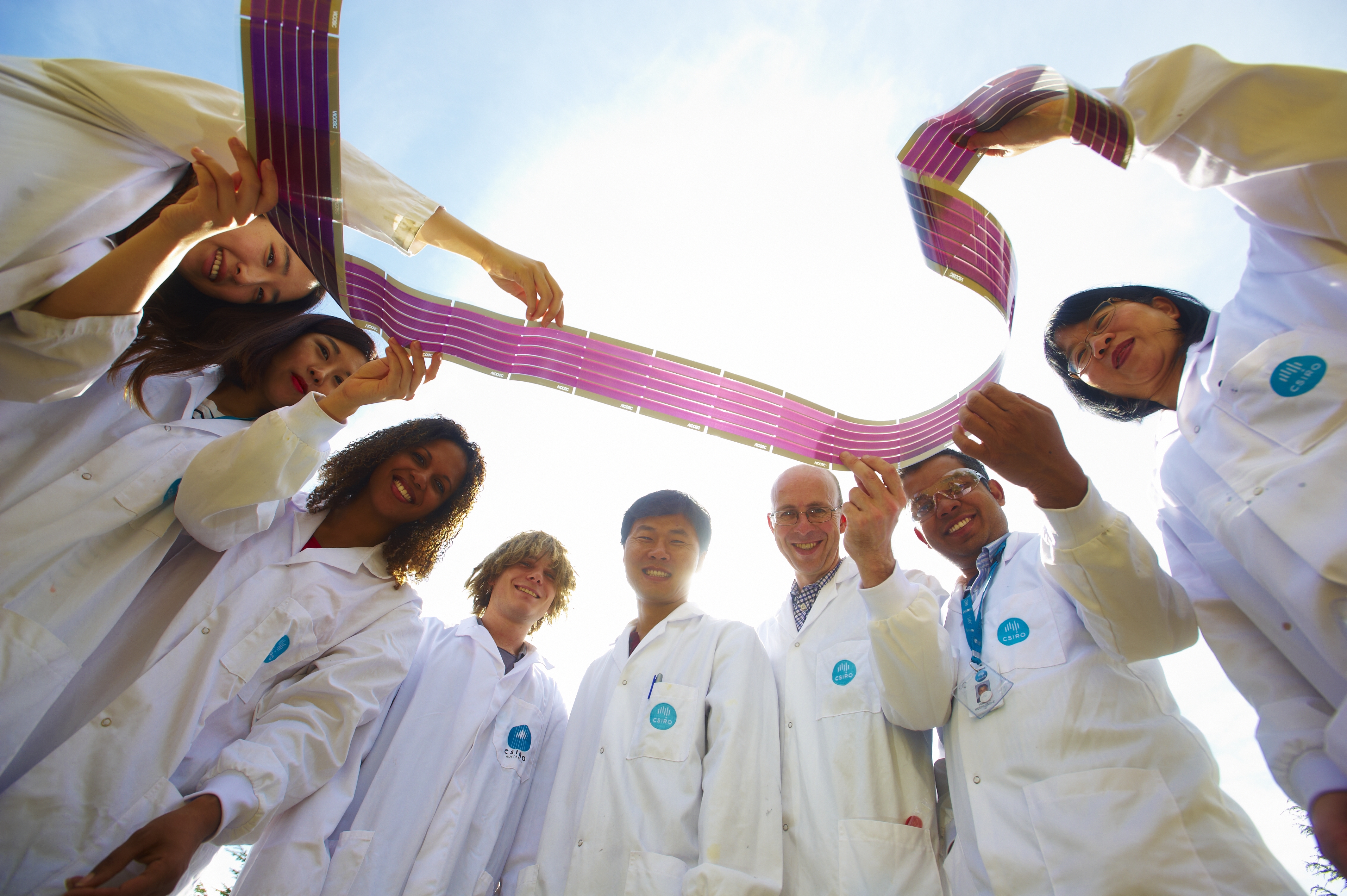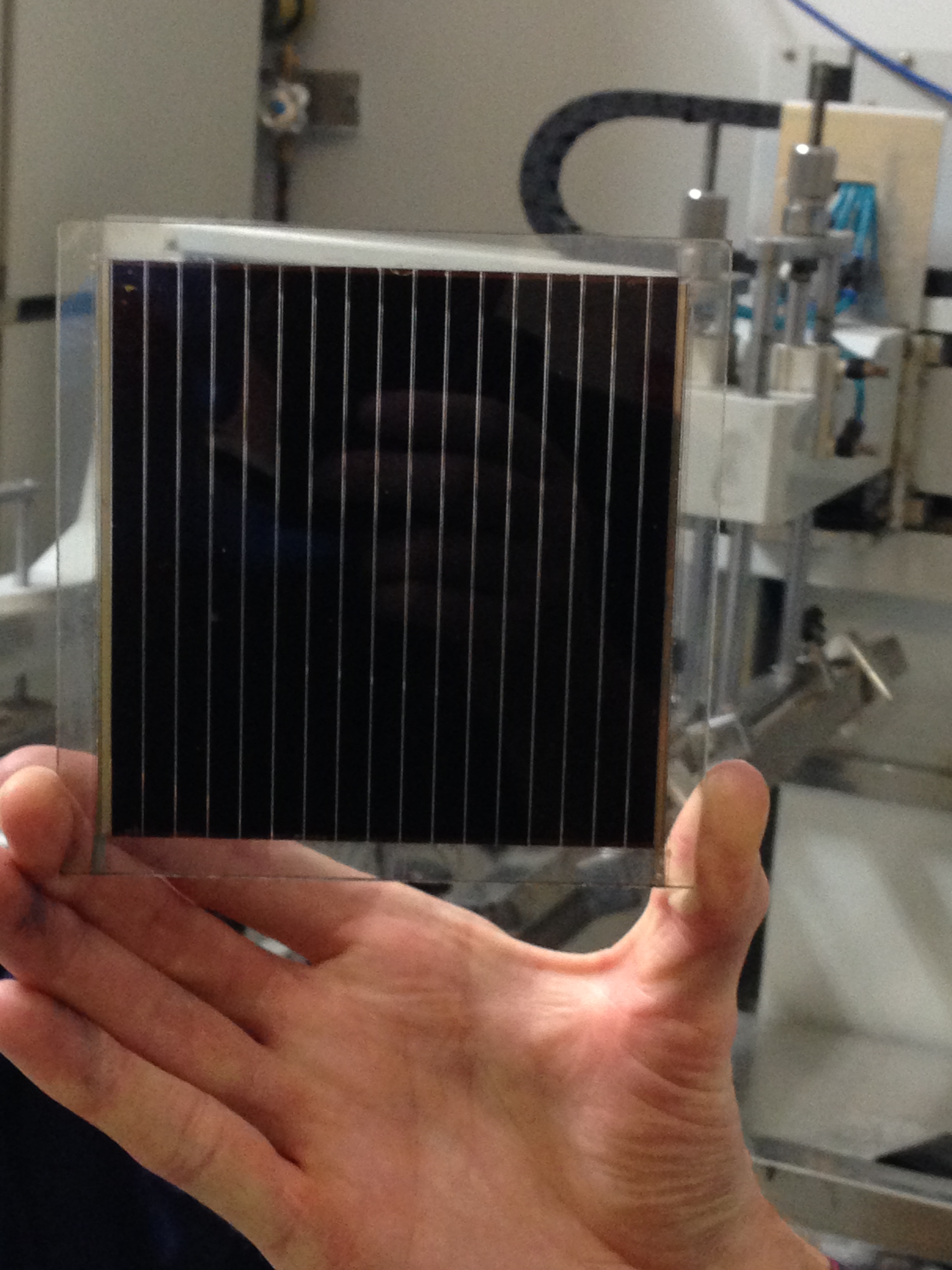The sun provides a huge amount of energy for us and our work on solar cells is helping to capture it.
By Emily Lehmann
Blessed with beautiful beaches and plenty of sunshine, it’s easy to argue that Australia is the lucky country.
Of all our major cities, Perth takes the cake as the sunniest with an average 3200 hours of sunshine annually. Even well-seasoned Melbournians, who live in our least sunny city, get to enjoy an average of 2200 hours of sunshine a year.
So it might not be so hard to believe that Australia is home to the highest solar radiation per square metre of any continent. Not only does this reinforce why ‘slip, slop, slap’ should be every local’s mantra, this high degree of sunshine means that we have some of the best solar energy resources in the world.
Right now, only 1.1 per cent of our electrical energy comes from solar, but this could soon change as new technologies come to market.
Solar cells – like the flexible kind we’re printing – are fast becoming an important player in the renewable energy mix. Thin and lightweight, solar cells can be plastered to almost any surface to harness the sun’s energy and bring you sustainable power.
Solar energy is a business opportunity for Australian industry that’s projected to be worth about US$160 billion internationally by 2023.
A new skin for solar energy. Dyesol’s perovskite based cell is highly efficient.
We’ve been working with Dyesol, a local small-to-medium-sized enterprise (SME) to tap into this growing market and help them become the first to commercialise a new kind of solar cell based on perovskite material.
Dyesol develops cutting edge, clean energy generation solutions for consumers and hopes to be able to offer perovskite solar cells as a competitive alternative to the more widely-used thin-film photovoltaic (PV) cells.
Perovskite solar cells are an attractive option as the material cost is low and they are highly efficient to manufacture. Yet, at this stage it’s uncertain whether the product would have stability and durability over the long-term compared to other solar cells currently on the market.
Together, we’re working to investigate this limitation and improve the process for making perovskite solar cells so that Dyesol can produce a high-quality, sought after product.
We’ve undertaken two Department of Industry projects together, where our flexible electronics experts were brought into Dyesol’s business to help them identify the best way to take the technology forward.
Now, through a longer term partnership, we hope to help Dyesol capture the opportunities that this technology – and our great solar potential – offers Australia and turn their idea into a profitable and globally competitive business.
Want to find the right expertise and tools to overcome technical challenges and grow your business? Connect with our SME Engagement Centre now.




26th May 2015 at 3:27 pm
“Even well-seasoned Melbournians, who live in our least sunny city, get to enjoy an average of 2200 hours of sunshine a year.”
I live in Melbourne, and don’t think I’ve seen 2,200 hours of sunshine in a decade lol 🙂